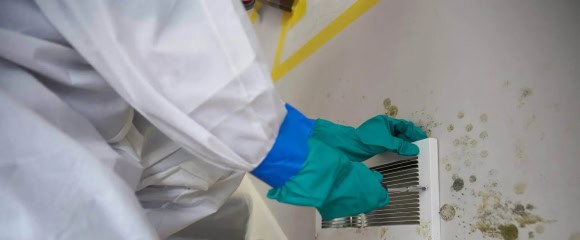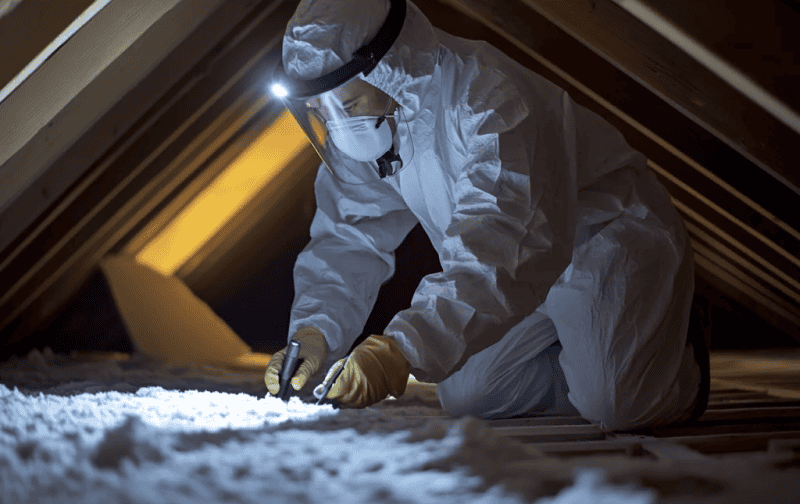Mold Remediation in Portland, OR
Mold Remediation in Portland is essential for maintaining a healthy living environment. Mold can develop quickly in damp areas, posing serious health risks to you and your family. Whether it's due to a leaky roof, flooding, or high humidity, addressing mold issues promptly is crucial to prevent further damage to your property and ensure the safety of your loved ones.
At Disaster Response, we understand the urgency of mold problems. Our team of experts is equipped with the latest technology and techniques to identify and eliminate mold effectively. We conduct thorough inspections to assess the extent of the mold growth and develop a tailored remediation plan that addresses your specific needs. Our goal is to restore your home to a safe and healthy condition as quickly as possible.
Mold can not only damage your property but also lead to various health issues, including respiratory problems and allergies. That's why our mold remediation services in Portland focus on not just removing the visible mold but also addressing the underlying moisture issues that allow mold to thrive. We take a comprehensive approach to ensure that your home is not only mold-free but also protected against future infestations.
Choosing Disaster Response means you're opting for professionalism and expertise in mold remediation. Our dedicated team is committed to providing exceptional service, ensuring that your home is safe and comfortable. Don't let mold compromise your health and property—contact us today for a thorough assessment and effective remediation solutions tailored to your needs.

- Disaster Response: The Authority on Portland Mold Remediation
- Disaster Response: The Leading Authority on Mold Remediation in Portland
- Mold Testing and Remediation Overview: Following IICRC S520 Standards
- Do You Really Need a Mold Remediation Expert in Portland?
- Reach Out to a Mold Remediation Specialist in Portland, OR, for These Mold-Related Issues
- Essential Steps to Take After Discovering Mold in Your Home in Portland
Disaster Response, The Authority on Portland Mold Remediation
Finding a reliable mold remediation service in Portland, OR, can be overwhelming, but with Disaster Response, the choice becomes clear. With years of experience in the industry, we specialize in effectively eliminating mold and restoring your home or business to a safe environment. Our dedicated team understands the health risks associated with mold exposure and is committed to providing thorough and efficient remediation services.

At Disaster Response, we utilize advanced techniques and state-of-the-art equipment to identify and remove mold from your property. Our experts conduct comprehensive inspections to assess the extent of the mold problem, ensuring that no hidden spores are left behind. We prioritize your safety and well-being, employing environmentally friendly products that are safe for both your family and the planet.
Our commitment to excellence extends beyond just mold removal. We also focus on preventing future mold growth by addressing the underlying causes, such as moisture issues and inadequate ventilation. Our team provides valuable advice on maintaining a mold-free environment, empowering you to take proactive steps in safeguarding your property.
Like the iconic landmarks in Portland, OR, we stand as a beacon of hope for those facing mold challenges. Our expertise and dedication to customer satisfaction set us apart in the mold remediation industry.
As true specialists in Portland mold remediation, we focus exclusively on the following services
- Comprehensive Mold Inspections
- Mold Removal and Cleanup
- Air Quality Testing
- Moisture Control Solutions
- Preventative Treatments
- Structural Drying and Dehumidification
- Post-Remediation Verification
- Emergency Response Services
- Residential and Commercial Services
- Consultation and Education on Mold Prevention
At Disaster Response, we strive to be THE authority on mold remediation in Portland. We understand the urgency of addressing mold issues and are here to provide swift, effective solutions. When you choose our services, you can trust that we will restore your space to a safe and healthy condition, allowing you to breathe easy once again.

Disaster Response: The Leading Authority on Mold Remediation in Portland
Finding a reliable mold remediation service in Portland can be overwhelming, but with Disaster Response, the choice is clear. With years of experience in the industry, we specialize in effectively identifying and eliminating mold issues, ensuring a safe and healthy environment for our clients. Our dedicated team understands the complexities of mold growth and is committed to providing top-notch service tailored to your specific needs.

At Disaster Response, we utilize advanced techniques and state-of-the-art equipment to assess and remediate mold infestations. Our experts are trained to handle various types of mold, from common household varieties to more hazardous species, ensuring that your property is thoroughly treated. We prioritize safety and efficiency, working diligently to restore your space to its original condition while minimizing disruption to your daily life.
Our comprehensive approach includes not only the removal of mold but also addressing the underlying causes of moisture that contribute to its growth. We believe in educating our clients about mold prevention and maintenance, empowering them to take proactive steps in safeguarding their homes or businesses. With our commitment to excellence, you can trust that your mold remediation project is in capable hands.
As a leading provider of mold remediation services in Portland, we pride ourselves on our customer-centric approach. We understand that dealing with mold can be stressful, which is why we strive to make the process as seamless as possible. Our team is here to guide you every step of the way, ensuring that you feel supported and informed throughout the entire remediation process.
- Comprehensive Mold Inspections
- Mold Removal and Cleanup
- Air Quality Testing
- Moisture Control Solutions
- Preventative Treatments
- Structural Drying and Dehumidification
- Post-Remediation Verification
- Emergency Response Services
- Residential and Commercial Services
- Consultation and Education on Mold Prevention
At Disaster Response, we are dedicated to being the leading authority on mold remediation in Portland. Our expertise and commitment to customer satisfaction set us apart in the industry. When you choose us, you can rest assured that we will restore your property to a safe and healthy state, allowing you to breathe easy once again.
Mold Testing and Remediation Overview: Following IICRC S520 Standards
The IICRC S520 standard provides a clear guide for safely managing mold issues in homes and buildings. Its main goals are to protect people, ensure thorough cleanup, and prevent future mold problems.
1. Assessment and Inspection
Initial Assessment:
- Trained professionals will conduct a detailed inspection of the affected area. This includes visual checks and using tools like moisture meters and infrared cameras to find hidden mold or moisture.
- Understanding moisture sources is crucial, as mold often arises from water issues or high humidity.
Mold Sampling:
- Although not always needed, testing (both air and surface samples) can help identify the type and amount of mold present.
- Sampling is useful when mold is suspected but not visible, such as when there are odors or health concerns.
- If sampling is done, it must follow proper protocols, with analysis performed by accredited labs.
2. Containment Protocols
Containment Procedures:
- To stop mold spores from spreading during cleanup, barriers (like plastic sheeting and negative air pressure) are used.
- The extent of containment varies; small areas might require basic barriers, while larger or heavily contaminated spaces need more extensive containment.
- Workers must enter and exit through decontamination chambers to avoid spreading mold.
3. Personal Protective Equipment (PPE)
- Workers should wear appropriate PPE, including gloves, N95 masks, full-body suits, and eye protection.
- The type of PPE needed depends on how severe the contamination is; more protective gear may be required for heavily affected areas.
4. Remediation Process
Source Control:
- Addressing the root cause of moisture is essential. This may involve fixing leaks, improving ventilation, or managing humidity.
Cleaning and Removal of Mold:
- Mold cannot just be treated with chemicals; it must be physically removed.
- Non-porous materials (like metals and glass) can often be cleaned with HEPA vacuums or damp cloths.
- Severely affected porous materials (like drywall and carpets) should be removed and disposed of according to local regulations.
- HEPA air filtration systems should be used to capture airborne mold spores during cleanup.
Cleaning Techniques:
- Common methods include HEPA vacuuming and scrubbing surfaces where mold is present.
- Antimicrobial agents may be used, but the focus is on physical removal.
5. Post-Remediation Evaluation
Final Inspection:
- After cleanup, a visual inspection ensures no visible mold remains.
- Air and surface tests may be conducted to confirm that mold levels are back to normal.
- It's crucial to check that the environment is dry to prevent mold from returning.
Documentation and Reporting:
- Detailed records of the remediation process, including testing results and cleanup procedures, should be maintained.
- This documentation is important for compliance and may be needed for insurance or legal matters.
6. Ongoing Prevention
- Educating building occupants about moisture control is vital. This includes maintaining HVAC systems, managing humidity, and promptly addressing leaks.
By adhering to the IICRC S520 standard, mold remediation professionals take a systematic and health-focused approach, ensuring that indoor spaces are restored to safe, mold-free conditions.
Do You Really Need, Need a Mold Remediation Expert in Portland?
While it may be tempting to tackle mold issues on your own, hiring a professional mold remediation service can ensure a thorough and effective solution. Mold can pose serious health risks and structural damage to your home, making it crucial to address the problem with expertise. Disaster Response specializes in mold remediation, providing the knowledge and tools necessary to restore your environment safely and efficiently.

Understanding the Mold Remediation Process
Mold remediation involves a systematic approach to identify, contain, and eliminate mold growth. Professionals like those at Disaster Response utilize advanced techniques and equipment to assess the extent of the mold infestation. This process includes air quality testing, surface sampling, and moisture control measures to prevent future growth. By understanding the specific conditions that led to mold development, experts can implement effective solutions tailored to your situation.

Health Risks Associated with Mold Exposure
Mold can lead to a variety of health issues, particularly for individuals with respiratory conditions, allergies, or weakened immune systems. Symptoms may include coughing, sneezing, skin irritation, and even more severe reactions in sensitive individuals. Engaging a mold remediation expert ensures that the mold is not only removed but that the air quality in your home is restored to a safe level, protecting the health of your family.

Preventing Future Mold Growth
After remediation, it's essential to take proactive steps to prevent mold from returning. Disaster Response provides guidance on moisture control, ventilation improvements, and regular inspections to maintain a mold-free environment. By addressing the underlying causes of mold growth, such as leaks or high humidity, you can significantly reduce the risk of future infestations.

The Importance of Professional Equipment and Techniques
Attempting to remove mold without the proper equipment can lead to incomplete removal and potential health hazards. Professionals use specialized tools such as HEPA vacuums, air scrubbers, and moisture meters to ensure thorough remediation. Disaster Response's trained technicians are equipped to handle even the most challenging mold situations, ensuring that your home is restored to a safe and healthy state.


JOANA RUFO
Swept Away Restoration & Carpet Cleaning
Disaster Response Introducing Swept Away Restoration & Carpet Cleaning: The Premier Choice for Emergency Clean-Up**
At Disaster 911, we're elevating the standard with ( Swept Away Restoration & Carpet Cleaning ), our trusted go-to contractor for emergency clean-up services. While others may settle for the status quo, ( Swept Away Restoration & Carpet Cleaning ) takes an innovative approach to restoration.
From water and fire damage to mold remediation, ( Swept Away Restoration & Carpet Cleaning ) doesn't just follow industry norms-they set new ones. Our rigorous vetting process ensures that ( Swept Away Restoration & Carpet Cleaning ) exceeds expectations, delivering cutting-edge solutions for your emergency needs.
When you choose Disaster 911 and ( Swept Away Restoration & Carpet Cleaning ), you're opting for a dynamic partnership that prioritizes effective, next-level recovery. Don't settle for the ordinary-when disaster strikes, choose the best in emergency response.
 PO Box 1134 Ashland, Oregon 97520
PO Box 1134 Ashland, Oregon 97520
 Call Us
Call Us
Reach Out to a Mold Remediation Specialist in Portland, OR, for These Mold-Related Issues
Mold growth can occur in various environments, particularly in areas with high humidity or water damage. This fungal growth can lead to significant health risks, property damage, and unpleasant odors. Recent studies have shown an increase in mold-related issues in Portland, with many homeowners facing challenges in managing and eliminating mold effectively. If you find yourself dealing with any of the following mold situations, it's crucial to contact a mold remediation expert promptly:
Visible Mold Growth
If you notice mold on walls, ceilings, or other surfaces, it's a clear sign that professional intervention is needed. Mold can spread quickly and may indicate underlying moisture problems.
Musty Odors
A persistent musty smell in your home can be a strong indicator of hidden mold. This odor often suggests that mold is present, even if it's not immediately visible.
Water Damage
Following a leak, flood, or any water intrusion, the risk of mold growth increases significantly. It's essential to address any water damage promptly to prevent mold from taking hold.
Health Symptoms
If you or your family members are experiencing unexplained respiratory issues, allergies, or skin irritations, mold exposure could be the culprit. Seeking professional help can ensure a safe living environment.
Condensation Issues
Excessive condensation on windows, walls, or pipes can create a breeding ground for mold. Addressing these issues with a mold remediation service can help prevent future growth.
Previous Mold Problems
If you've dealt with mold in the past, it's vital to monitor the area for any signs of recurrence. A professional can assess the situation and implement preventive measures.
Regardless of the mold issue you're facing, it's important to understand that Portland residents should act quickly to mitigate the risks associated with mold exposure. Mold can not only damage your property but also pose serious health risks to you and your family. Engaging a qualified mold remediation specialist like Disaster Response can provide the expertise needed to effectively eliminate mold and restore your home to a safe condition.
Essential Steps to Take After Discovering Mold in Your Home in Portland
Finding mold in your home can be alarming and overwhelming. Mold can grow quickly and pose health risks, so it's crucial to act promptly. Here are the steps you should follow if you discover mold in your Portland residence:
- Identify the source of moisture that is causing the mold growth.
- Ensure the affected area is well-ventilated to minimize exposure.
- Avoid touching or disturbing the mold, as this can release spores into the air.
- Document the extent of the mold growth with photographs for your records.
- Contact a professional mold remediation service to assess the situation.
- Follow any safety recommendations provided by the remediation experts.
- Keep children and pets away from the affected area until it has been treated.
- Review your home's ventilation and humidity levels to prevent future mold growth.
If you find mold in your home, it's essential to address it quickly to protect your health and property. Mold can lead to various health issues, including respiratory problems and allergic reactions. At Disaster Response, we specialize in mold remediation and are dedicated to restoring your home to a safe and healthy environment.
Contact Your Local Mold Remediation Experts in Portland, OR, for a Free Consultation
At Disaster Response, we understand the stress and uncertainty that comes with mold issues. Our team is committed to providing you with the highest level of service and support during this challenging time. We approach every situation with professionalism, care, and urgency.
Our mold remediation specialists will work diligently to identify the source of the mold, safely remove it, and implement measures to prevent its return. When your home's safety and your family's well-being are at stake, don't settle for anything less than the best—choose Disaster Response today.
Contact Your Emergency
Disaster Response Now!
Latest News in Portland, OR
East Portland sidewalks win big in latest PCEF grant awards
BikePortlandhttps://bikeportland.org/2024/12/11/east-portland-sidewalks-win-big-in-latest-pcef-grant-awards-391850
The Portland Bureau of Transportation is set to receive $20.6 million to build sidewalks in east and northeast Portland. And they’re also a partner with TriMet on a $55 million project award that will result in new sidewalks to connect to a forthcoming bus upgrade on 82nd Avenue. The funding is just the latest grant award PBOT has received from the Portland Clean Energy Fund (PCEF), a tax on big corporations passed by voters in 2018.The PCEF Committee recommended eight projects from the ...
The Portland Bureau of Transportation is set to receive $20.6 million to build sidewalks in east and northeast Portland. And they’re also a partner with TriMet on a $55 million project award that will result in new sidewalks to connect to a forthcoming bus upgrade on 82nd Avenue. The funding is just the latest grant award PBOT has received from the Portland Clean Energy Fund (PCEF), a tax on big corporations passed by voters in 2018.
The PCEF Committee recommended eight projects from the Collaboration for Climate Action program for funding at a meeting this morning. That program has over $150 million in available funding to be awarded over five years. In addition to the two transportation projects, the committee also recommended projects to replace City of Portland fleet vehicles with EVs, help more Portlanders install solar power, make schools more climate resilient, and more.
Among the eight projects are PBOT’s “Sidewalks to Schools” — a $60 million list of 19 sidewalk projects (above) that would help connect 17 public schools with better, safer infrastructure. The PCEF committee downscoped the project to $20.6 million, so the award will allow PBOT to build all nine of its Tier 1 projects. The projects — which include 90 new ADA ramps, street lighting and planting of 180 new street trees — are in Cully and the southern part of Council District 1.
PBOT Director Millicent Williams introduced a presentation on the project at a PCEF Committee meeting last night. PBOT Pedestrian Coordinator Gena Gastaldi was also there. She said the completion of the Tier 1 projects will impact 17,000 households. “These projects are all on PBOT Safe Routes to School primary investment routes and will provide critical connections on our pedestrian network near schools,” Gastaldi told the committee.
Gastaldi also touted how the grant funding will be an, “incredibly efficient use of PCEF funding.” That’s because PBOT won’t use it to pay for any city staff time and PBOT has either already completed and/or nearly completed all the required design, engineering, and neighborhood outreach. All that’s left to do is build them. And because these projects are so shovel-ready, Gastaldi said the three Cully projects will be built as early as summer of 2025.
In addition to $20.5 million awarded directly to PBOT, TriMet was awarded $55 million for their 82nd Avenue Transit Project (a separate but closely related effort to the Building a Better 82nd Avenue Plan that was adopted by Portland City Council last week). A portion of that will allow PBOT to build an additional 26 blocks of sidewalks on 82nd to ensure better access to the new bus rapid transit (BRT) line when it opens in 2029.
This continues a very successful effort by PBOT to earn PCEF grant awards. This latest announcement pushes their total to nearly $200 million.
PCEF was created to benefit the communities that are most impacted by climate change. It also has a stated goal to not just reduce greenhouse gas emissions, but to also help build stronger communities by partnering with nonprofit organizations and making strategic investments in workforce development.
For Oregon Walks Executive Director Zachary Lauritzen, news of this recent grant was another dream come true. His group recently won over $900,000 from PCEF to launch walking school buses.
At last night’s PCEF committee meeting, Lauritzen, who said he was “genuinely jumping for joy” upon hearing the news, offered gratitude and shared important context about why east Portland needs all the help it can get:
“East Portland used to be outside the city of Portland, and the design standards were different. They didn’t require sidewalks when development happened. When [east Portland] was annexed into the city [in 1981] there was no plan to finish those sidewalk networks. And so here we are, 40 years later, with thousands and thousands of kids who don’t have safe routes to school… It’s kind of a hopeless feeling, hearing again and again from families about their fear for the safety of their child to do the simple act of walking to school.”
It was Lauritzen and Oregon Walks’ volunteers who did the community organizing to identify and build support for these projects. Even so, Lauritzen gave high praise to PBOT for being such a willing partner. “I’m super excited that a big bureau like that could have their ears to the ground. That they could hear from us and say, ‘Yeah we’ll go for it’.”
Go deeper:— PBOT Sidewalks to Schools grant application — 82nd Avenue Transit Project grant proposal narrative
From New York to Portland – and back to Sioux Falls – couple finds happy homecoming
Submittedhttps://pigeon605.com/from-new-york-to-portland-and-back-to-sioux-falls-couple-finds-happy-homecoming/
Partners, PeopleThis paid piece is sponsored by the Sioux Falls Development Foundation.The theater capital of the country was calling – and Ann Fiorita couldn’t ignore it.“Ultimately, I really wanted to go to New York. Any musical theater person’s dream is to go to New York,” said Fiorita, who grew up in Siou...
This paid piece is sponsored by the Sioux Falls Development Foundation.
The theater capital of the country was calling – and Ann Fiorita couldn’t ignore it.
“Ultimately, I really wanted to go to New York. Any musical theater person’s dream is to go to New York,” said Fiorita, who grew up in Sioux Falls and graduated from O’Gorman High School.
The theater dream first took her to Indiana University but brought her back after a year to reunite with her favorite teacher, Kim Bartling, who would go on to teach her at the University of Sioux Falls.
“That was the incentive to come back as a student,” she said. “And I was able to do theater and play soccer in Sioux Falls during college, which was another activity I loved, and ultimately I was able to graduate a year early.”
From there, it was on to Illinois to work for a summer theater company, where she met friends who also were hoping to move to New York that fall.
“I was there for 13 years and loved it,” Fiorita said. “It is not an easy place to live, but I think that’s what makes it even more worth it. It’s a city that humbles everyone. The energy of New York is infectious, and for a musical theater person, it was the place to be, and that was incredibly exciting.”
She auditioned for off-Broadway roles and along the way realized the artist life wasn’t the best fit.
“You don’t know what your income will be the next month or if you’re going to be here or on a cruise ship or a national tour,” she said. “I felt uneasy not knowing a lot of things.”
Like many New Yorkers in the arts, she tried out her share of part-time jobs – from catering to waitressing and bartending – and ultimately found her niche at Anthropologie, a women’s apparel and home decor retailer on the verge of being a national powerhouse.
Fiorita with her former boss at Anthropologie
“The people were so smart and funny and creative, and there was a really joyful energy in the space,” Fiorita said. “They’d talked to me about getting into management, and when I finally decided I was done with theater and ready to get health insurance and work full time, they were as excited as I was.”
That began a retail career that would lead her eventually to become the manager of Anthropologie’s location at Rockefeller Center and ultimately as a district manager to oversee all the stores in New York.
Along the way, though, Fiorita remained connected with Sioux Falls in multiple ways.
Fiorita and her niece, Becca
“If someone were going to New York from Sioux Falls, often they would stop in the store and say hi, and it made the world feel really small in a good way,” she said.
And speaking of small worlds, Fiorita would go on to date her future husband in New York – who happens to be a fellow O’Gorman High School graduate.
“We were several years apart but knew each other through the theater scene and other activities,” she said.
“I knew a handful of people in New York who had moved there from Sioux Falls, and one day I saw a photo of him on social media waiting by a subway on a mutual friend’s page, so I messaged him to see if he lived here too, and he wrote back right away, and we got together shortly after that.”
They were married in 2011 and were looking toward starting a family when they realized a move would be needed.
“In New York, most people go to Connecticut or New Jersey or the suburbs or Long Island and settle down,” she said. “And we didn’t feel connected to any of those places.”
When an opportunity with her employer became available to manage the northwest region for sister brand Free People, she and Guy headed to Oregon in 2016. Their first son was born five months into her new role.
“It was a lot of travel – we opened up 18 stores while I was there – but then COVID hit,” Fiorita said. “I was traveling for work. My husband was traveling for work. And we kind of got off the hamster wheel and sat on the couch and said, ‘What are we doing?’”
If one wasn’t traveling, the other was, she said.
“We were ships passing in the night and away from family, and we knew we needed to change something,” she said.
“It took a year and a half to make the decision, but the catalyst was my husband’s company decided to permanently go remote, so we knew we could have the security of his job and move back to South Dakota.”
The Fioritas moved back to Sioux Falls the summer before their oldest son started kindergarten.
“I feel very fortunate to be in Sioux Falls,” she said. “The first thing that felt really distinct was how nice everyone is here, how genuinely nice. I’m very close to family, and we spend a lot of time together, and we’re living in a community that is so clean and supportive of families.”
Fiorita’s company offered the chance to work from Sioux Falls, “but ultimately I knew I wanted to change careers,” she said.
“It’s so much fun working in retail, but it’s a lot of long days, and when you do a store opening, you’re there a couple of weeks, and I was ready to be there for soccer games and hockey practices and choir concerts.”
She decided to lean into her interest in finance and became a certified plan fiduciary adviser in 2023, shortly after the birth of her second son. She now has joined her brother as a financial adviser, and the two work together at the Sioux Falls office of Waddell & Reed Inc.
“I really love what I do and am thankful I took the time to explore a lot of things I was interested in,” she said. “This role is never boring. Everyone’s situation is different, and we have the most wonderful clients. I’m proud that we’re really focused on education and meeting people wherever they’re at on the financial journey.”
Guy still travels for his role in the advertising and marketing industry but has connected with the Sioux Falls community when he’s here.
“He’s joined Startup Sioux Falls, which is a great place and a way to get out of the house and be around people,” she said. “I’ve participated in some of their events as well, and it’s just a really cool addition to have in Sioux Falls.”
Outside of work, she loves returning to a local favorite – the city recreation trail – along with visiting the Washington Pavilion and State Theatre. The family loves outdoor concerts at Levitt at the Falls and exploring the city’s many unique playgrounds.
Fiorita now takes her kids to places like Newton Hills State Park, where she grew up camping.
“Not long ago, we were there, and the kids were riding their bikes around, and it was just pure, innocent, great fun – no devices – and times like that are so special,” she said.
“I also was really into figure skating growing up, and now my son plays hockey at the Scheels IcePlex, and I am so impressed with that facility. I keep telling him, ‘You don’t know how lucky you are’ and how cool it is to have three sheets of ice year-round.”
She also has connected to the community in meaningful ways.
“In Sioux Falls, there’s such a focus on giving back – more so than anywhere I’ve lived – and I knew that was an important part of being an adult, but it wasn’t something I could do in a meaningful way in New York or Oregon because I traveled a lot,” Fiorita said.
“So when I moved back and made the career switch, I wanted to get involved.”
She first was introduced to Court Appointed Special Advocates, or CASA, and “that introduced me to a lot of parts of the community and the incredible teachers in our community,” she said. “I was blown away.”
It was a similar experience as she began volunteering with EmBe’s Dress for Success.
“It brings me back into retail a little bit when I volunteer there, and they help with interviewing and resumes. A lot of it is feeling good in the interview, and then when you get a job, you can come back and get a week’s worth of clothes,” she said.
“People donate really nice clothes, and they do a great job of curating it. We have incredibly caring people in our community, and a lot of employers support and encourage volunteering. It’s not something you have to do on weekends. If you need an hour to volunteer during the workweek, it’s encouraged.”
The Fiorita family’s experience isn’t out of the ordinary – and is possible for many others, said Denise Guzzetta, vice president of talent and workforce development for the Sioux Falls Development Foundation.
“We see this time and again where Sioux Falls natives have moved away, grown their careers and started their families and then realize the advantage of coming home,” she said.
“When you do return, you’re going to find there are so many opportunities to continue to grow professionally here while raising your family in a place that will surround you with support. We’re so thrilled to welcome Ann and Guy back to Sioux Falls and couldn’t be happier about how they’ve reconnected to our community in so many ways.”
Are you considering returning to Sioux Falls – or do you know someone who should? Connect with the Sioux Falls Development Foundation’s “Wish You Were Here” initiative through the end of the year.
To learn more, click below.
New marketing campaign aims to encourage moves back to Sioux Falls
The Best Tamales in Portland and Beyond
Brooke Jackson-Gliddenhttps://pdx.eater.com/maps/best-tamales-portland-oregon
When trying to track down top-tier tamales, there are more places to look than your local Mexican restaurant. Tamale vendors outside grocery stores and gas stations have sold corn-husk-wrapped gold for decades, filling moist, pillowy masa with everything from chicken mole to Oaxacan cheese. In Portland, you’ll find tamales across the city and in its surrounding suburbs — on restaurant menus, at food carts, in the deli cases of Mexican markets, and out of coolers. Some of these tamale vendors even use masa nixtamalized in the city...
When trying to track down top-tier tamales, there are more places to look than your local Mexican restaurant. Tamale vendors outside grocery stores and gas stations have sold corn-husk-wrapped gold for decades, filling moist, pillowy masa with everything from chicken mole to Oaxacan cheese. In Portland, you’ll find tamales across the city and in its surrounding suburbs — on restaurant menus, at food carts, in the deli cases of Mexican markets, and out of coolers. Some of these tamale vendors even use masa nixtamalized in the city, whether it’s done in-house or at the lauded Three Sisters masa factory.
Below, find our guide to tracking down tamales in Portland and beyond. Note that some of these tamales are served chilled, to be reheated at home. Also, many restaurants offer holiday-specific tamales; it’s worth reaching out to your favorite Mexican restaurant in town to see if they’ll offer holiday tamales. On this update, Rusa, which has permanently closed, leaves the trail; roving farmers market stand Sara Mexican Tamales comes on. For more Mexican food, check out this broader cuisine map.
Eater maps are curated by editors and aim to reflect a diversity of neighborhoods, cuisines, and prices. Learn more about our editorial process. If you buy something or book a reservation from an Eater link, Vox Media may earn a commission. See our ethics policy.
Sara Rodriguez’s tamales come in less-expected, vegetable-centric flavors like spinach and cheese and maitake mushroom, but traditionalists will also be able to find pork, chicken, and more. The green salsa is bright and maybe the best of the bunch, though festive eaters might dress their tamales with stripes of both the red and green varieties. Find her at farmers markets in and around the city, including Portland Farmers Market, Gresham Farmers Market, and Oregon City Farmers Market.
Likely the most famous spot in Portland for tamales, Tamale Boy’s wide range of both Oaxacan and Northern Mexican variations make it a local favorite. In the former, custardy, banana-leaf-steamed masa arrives filled with mole negro or citrusy cochinita pibil, while the fluffy, plump, corn-husk-steamed cousin comes with options like chile verde or chicken tinga. Another fun route at Tamale Boy: Ordering a tamale frito, a fried Northern Mexican tamale with avocado salsa and two fried eggs. You can pre-order Christmas tamales online.
When it comes to sheer variety of tamales, it is extremely difficult to beat this Milwaukie tamale shop. The frozen selection is staggering, with options like chorizo-potato, pork and asparagus in red chile, chicken-pesto with cheese, and even tiger prawn with tomato-jalapeno sauce. Canby Asparagus also offers tamales from other parts of Latin America, including Nicaraguan nacatamales. Be prepared to steam them at home.
This sweet little hut in Vancouver serves stellar tamales out of a walk-up window, absolutely smothering them in either tomato or tomatillo salsa, avocado salsa, and sour cream. The tamales themselves are both soft and tender but also light, sopping up the flavor of their various sauces with aplomb. They’re available with fillings like pork, chicken, and rajas.
While many Mexican markets have large, devoted followings in Portland, La Oaxaqueña stays relatively under the radar. However, this market’s selection of banana leaf tamales is very strong, with a nice, luscious texture and plenty of filling. Expect a classic roundup: Pork in chile verde, chicken in salsa rojo, rajas, and sweet corn.
Parked within the Eastport Food Carts pod, Los Tamales Locos serves its namesake with fillings like mole-braised pork, chicken in chile verde, and rajas. Tamales here strike the right balance of moist and fluffy, though the mole with the pork may even outshine the masa. The cart’s take on a Oaxacan tamale comes with shredded chicken and tomatillo.
Cooks at this Northeast 82nd Yucatecan restaurant mix pork and chicken in an achiote-laden sauce and pat the mixture into masa, wrapping the tamales in banana leaves for a rich, silky texture. Often, the restaurant also serves a specifically Yucatecan tamal variant, brazo de reina, as a special. stuffed with hard-boiled eggs.
This Yucatecan spot near Rocky Butte serves the region’s style of tamales, akin to Oaxacan with a banana-leaf wrap. Mestiza’s tamales do hew a little smaller, but the texture of the masa and generous portion of filling make them stand out. They come stuffed with a tender chicken; order them alongside some of Mestiza’s fantastic panuchos.
Tamale Factory is a Gresham institution, thanks to its parcels of masa-stuffed corn husks with fillings like pork in salsa verde or jalapeno-cheese. The sweet corn here is a particular standout; order them all for delivery.
Sara Rodriguez’s tamales come in less-expected, vegetable-centric flavors like spinach and cheese and maitake mushroom, but traditionalists will also be able to find pork, chicken, and more. The green salsa is bright and maybe the best of the bunch, though festive eaters might dress their tamales with stripes of both the red and green varieties. Find her at farmers markets in and around the city, including Portland Farmers Market, Gresham Farmers Market, and Oregon City Farmers Market.
Likely the most famous spot in Portland for tamales, Tamale Boy’s wide range of both Oaxacan and Northern Mexican variations make it a local favorite. In the former, custardy, banana-leaf-steamed masa arrives filled with mole negro or citrusy cochinita pibil, while the fluffy, plump, corn-husk-steamed cousin comes with options like chile verde or chicken tinga. Another fun route at Tamale Boy: Ordering a tamale frito, a fried Northern Mexican tamale with avocado salsa and two fried eggs. You can pre-order Christmas tamales online.
When it comes to sheer variety of tamales, it is extremely difficult to beat this Milwaukie tamale shop. The frozen selection is staggering, with options like chorizo-potato, pork and asparagus in red chile, chicken-pesto with cheese, and even tiger prawn with tomato-jalapeno sauce. Canby Asparagus also offers tamales from other parts of Latin America, including Nicaraguan nacatamales. Be prepared to steam them at home.
This sweet little hut in Vancouver serves stellar tamales out of a walk-up window, absolutely smothering them in either tomato or tomatillo salsa, avocado salsa, and sour cream. The tamales themselves are both soft and tender but also light, sopping up the flavor of their various sauces with aplomb. They’re available with fillings like pork, chicken, and rajas.
While many Mexican markets have large, devoted followings in Portland, La Oaxaqueña stays relatively under the radar. However, this market’s selection of banana leaf tamales is very strong, with a nice, luscious texture and plenty of filling. Expect a classic roundup: Pork in chile verde, chicken in salsa rojo, rajas, and sweet corn.
Parked within the Eastport Food Carts pod, Los Tamales Locos serves its namesake with fillings like mole-braised pork, chicken in chile verde, and rajas. Tamales here strike the right balance of moist and fluffy, though the mole with the pork may even outshine the masa. The cart’s take on a Oaxacan tamale comes with shredded chicken and tomatillo.
Cooks at this Northeast 82nd Yucatecan restaurant mix pork and chicken in an achiote-laden sauce and pat the mixture into masa, wrapping the tamales in banana leaves for a rich, silky texture. Often, the restaurant also serves a specifically Yucatecan tamal variant, brazo de reina, as a special. stuffed with hard-boiled eggs.
This Yucatecan spot near Rocky Butte serves the region’s style of tamales, akin to Oaxacan with a banana-leaf wrap. Mestiza’s tamales do hew a little smaller, but the texture of the masa and generous portion of filling make them stand out. They come stuffed with a tender chicken; order them alongside some of Mestiza’s fantastic panuchos.
Tamale Factory is a Gresham institution, thanks to its parcels of masa-stuffed corn husks with fillings like pork in salsa verde or jalapeno-cheese. The sweet corn here is a particular standout; order them all for delivery.
Disclaimer:


 Call us 877-451-9251
Call us 877-451-9251 Request Information
Request Information